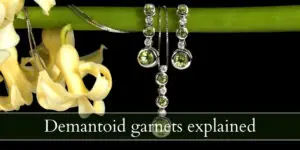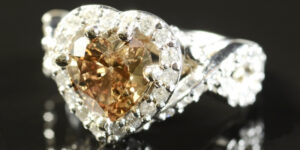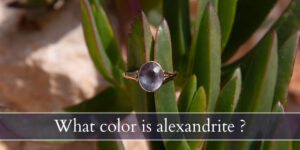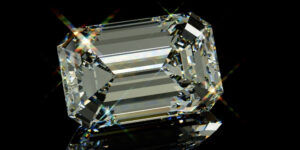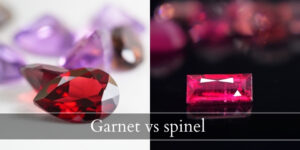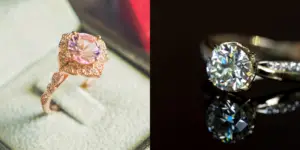Have you been browsing diamonds recently and discovered this amazing new set of colors ? For the longest time ever, we all thought diamonds were just one thing: transparent, and we tended to call them white. But now actual white diamonds come along and they confuse absolutely everyone who just got into diamonds.
What are white diamonds, and how are they any different from the other ‘white’ diamonds ? What makes them white ? Today we’re taking a look at these beautiful, milky gems that catch everyone’s attention.
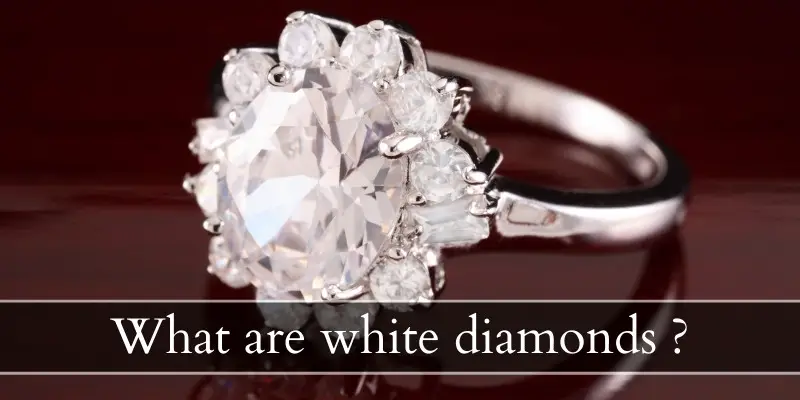
What are white diamonds ?
White diamonds are diamonds with many inclusions that appear white, making the entire diamond look cloudy, or milky (like a drop of milk in water). These diamonds are found everywhere across the world, wherever colorless diamonds exist as well. Some white diamonds appear almost opaque, due to their inclusions, and some appear almost completely transparent but with a blue-yellow haze within them.
White vs colorless diamonds
The term ‘white diamond’ is usually applied to colorless diamonds, the ones that are graded D-F in the GIA standard grading system. However those diamonds are not true white, rather they are colorless, they have no discernible trace of color. Diamonds in general come in a range of colors, and the most common is colorless to yellow/brown. The diamonds that are almost completely colorless are the ones people usually (wrongly) refer to as white.
But the true white diamonds are the ones that appear white or hazy or milky to the naked eye. And this is where the confusion comes in. From a technical point of view, the hazy diamonds are the true white diamonds. But from a layman’s point of view, the colorless ones are also white.
For the purpose of this article we’ll refer to all hazy and milky diamonds as white, and the D-F diamonds as colorless, to avoid any confusion.
Read also: Cubic Zirconia VS Diamond
Inclusions versus color in diamonds
To understand the real difference between colorless and white diamonds, you have to understand how a diamond is graded. Diamonds are graded by their 4 Cs – color, cut, clarity, and carat. The carat is the size and weight of a diamond, which varies greatly on the size of the rough, the skill of the lapidary, and the cut style.
The cut is the way the diamond is cut, which can be brilliant or a step cut, and from there you have plenty of variations, like the round brilliant, the trillion, the emerald cut, the cushion cut, princess cut, etc.
The color of a diamond is important, and it’s just as important as the clarity of a diamond. A diamond’s color is dictated by small impurities found throughout the diamond that give it a slight cast or hue. The hue usually ranges from no hue at all to deep yellow/brown in most cases.
A diamond’s clarity is judged by the amount of impurities or inclusions found within the stone. This is directly correlated with the diamond’s color in most cases. The more included the diamond, the less clear it is, and the more the overall color is affected.
In the case of white, hazy diamonds the color is derived directly from the inclusions within the gemstone. They are tiny, microscopic and cannot be seen with the naked eye, but their overall effect can be seen.
So, white diamonds are both colored and heavily included. Colorless diamonds have no color (well, nearly) and no discernible inclusions.
Fancy white diamonds have a noticeable white, milky color
White diamonds as we know them in this post – hazy, milky diamonds – are part of the fancy diamonds category. As funny as it sounds, it’s just the name given to diamonds that are not colorless, but instead display a color quite well. So pink, brown, black, white, green, red, blue diamonds and all the other colors you may find in a diamond are all actually fancy diamonds.
White diamonds are fancy white diamonds, if you want to ask your jeweler in a more specific way. You’ll notice the white diamonds range in the color tint, with the clearer ones looking a bit bluish white the more opaque ones look a bit more yellow.
Try getting a glass of water, half-full. Pour a bit of milk in it, stir, and see how the color changes. Add a bit more milk, and the color becomes whiter with less blue tint. Hold it up to the light and you can still make out some light coming through.
That’s the color range of a white diamond, and it’s really beautiful to look at. The blues and yellows are more subdued in the actual diamonds, but that is the closest you can come to seeing the color without holding a diamond in your hand.
Are white diamonds rare ?
White diamonds are fairly rare, because they need a specific set of inclusions to achieve that white color, regardless of their clarity. This is the same as black diamonds being rare. They don’t necessarily occur once in a lifetime, but finding one that is on the end of the color spectrum and very white is not easy.
This is especially true if you’re looking for a white diamond as a jeweler. These aren’t the most expensive diamonds, but they’re not easy to come by because not that many people ask for them. They’ve received more attention the last few years but not enough to bring them to the forefront.
How much does a 2 carat white diamond cost ?
A white diamonds is more affordable than a colorless diamond, but more expensive than a black diamond, or even a salt-and-pepper diamond. For example this Asscher cut 2.01 carat I2 white diamond goes for about $14k on Leibish.
Another white diamond, this one with a round brilliant cut and slightly larger (2.20 carat) goes for about $13k, also on Leibish. Both diamonds are included and you can see some tiny black specks in both of them.
For comparison take a look at this 2.16 carat colorless diamond, also on Leibish. It’s a colorless diamond but due to the way the inclusion is set in the stone (SI2), it looks dark grey face-up. Once you turn the diamond, it’s completely transparent. Many other inclusions are also visible, and the color for this diamond is F. And this one runs for about $20k, with all of its flaws and imperfections. Imagine what a VVS2 diamond of the same color would go for !
So by comparison a white diamond is more affordable than a colorless diamond for sure. If you’d like to see what this diamond type looks like on a ring, take a look at this one on Leibish. It’s a marquise cut white diamond (1.01 ct) with pink diamond pave, all set in 18k rose gold.
A white diamond does not sparkle like a colorless diamond, and this is part of its charm, you could say. Finding jewelry that has fancy white diamonds instead of colorless ‘white’ diamonds is actually kind of difficult. You’re better off with smaller brands, or looking on Etsy (like this one) or a similar bespoke service.

I’m the main author for jewelrymaterialguide.com. I started this site after we did tons of research before our wedding and noticed that there is information about rings, jewelry, and so on that is really hard to find on the internet.

